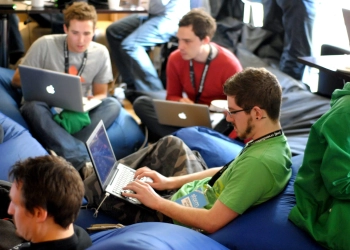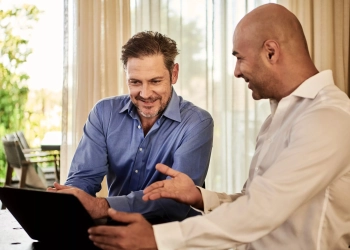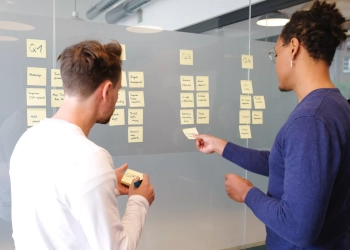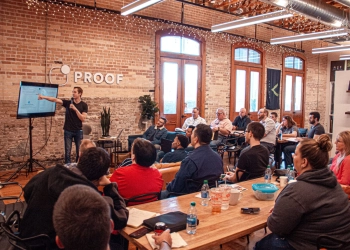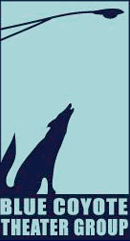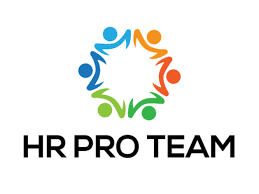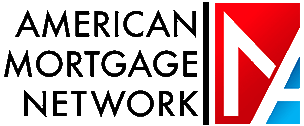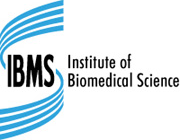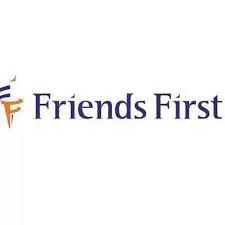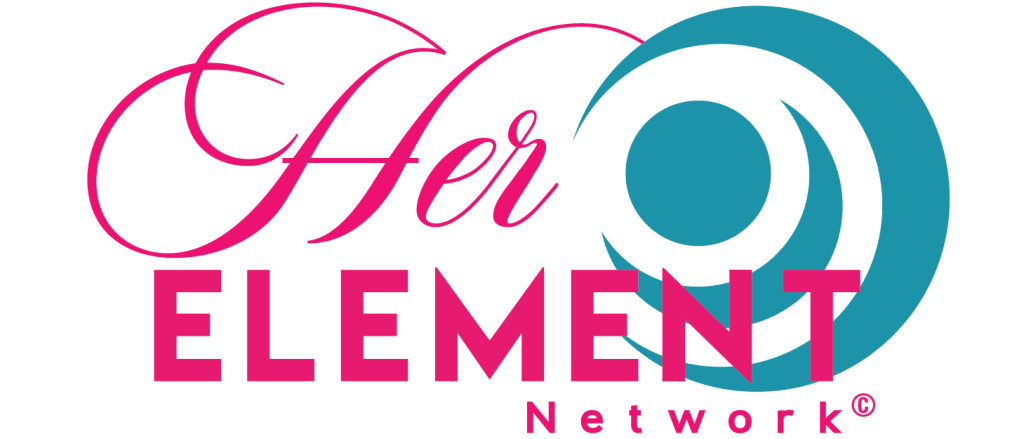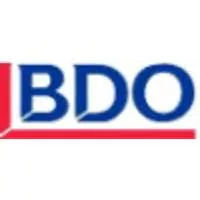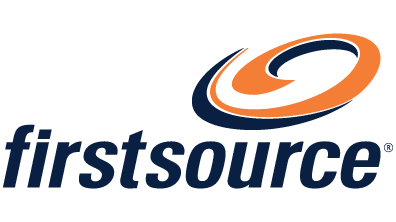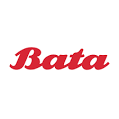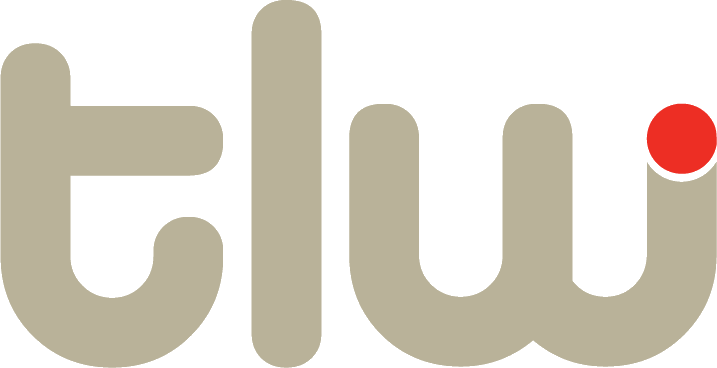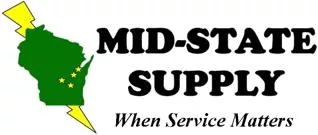For modern companies, it seems the answer to every team-working challenge can be found by exploring the Myers-Briggs Type Indicator (MBTI) in team-building activities and using the advice they promote.
However, there’s an art to using Myers-Briggs in team-building activities.
You’ve probably heard of some psychometric test uses, but in this case, we should start at the beginning.
The Myers-Briggs Type Indicator (MBTI) is a personality assessment that categorizes individuals into one of 16 personality types based on their preferences across 4 dichotomies:
- Extraversion (E) vs Introversion (I).
- Sensing (S) vs Intuition (N).
- Thinking (T) vs Feeling (F).
- Judging (J) vs Perceiving (P).
To help you find the best of the best uses of MBTI, we want to stress that knowing team members’ MBTI personality types can help managers better understand individual work styles, strengths, and potential areas for growth.
Supercharge Your Training Courses – Special Offer From Oak Innovation
Background on Using MBTI in Team Building
What’s going on with the use of personality style tests in teams?
If you haven’t asked yourself this question, then you probably haven’t seen the endless discussions that have taken over team-working forums in the past.
There was a moment not long ago when it seemed everyone was talking about using MBTI in team building. However, changes in how teams operate since the pandemic have somewhat cooled this attention – despite the considerable benefits they can generate for a company.
We believe that laying out what these tests involve should help determine whether you should use them.
In basic terms, MBTI involves having team members complete the assessment to determine their type. This allows managers to see their team’s personality composition and employee strengths.
Of course, this all may seem fairly simple, but the good news is that managers can then use this knowledge to:
- Improve communication by understanding how different types of individuals prefer to give and receive information.
- Assign tasks and roles based on team members’ natural strengths.
- Identify potential blindspots or weaknesses to be aware of.
- Build more well-rounded teams with a balance of perspectives.
The Value of MBTI in Team Building
It’s important to contextualize MBTI.
There is no single “application” of the Myers-Briggs Type Indicator (MBTI), but there’s a desired way to apply this assessment.
Whether you’re a die-hard who prefers sticking to what’s written in the manual or the type of person willing to undertake something new when developing team activities, your intentions have much to do with what happens next.
We can confidently say that the experts tell us that using MBTI in team building provides many benefits. To illustrate:
- Enhanced mutual understanding between team members.
- Appreciation of differences in work styles and perspectives.
- More effective collaboration as a result of adapting to team members’ preferences.
- Increased self-awareness for individual team members.
- Conflict resolution can be improved by understanding clashes resulting from personality differences.
Features and Benefits of MBTI in Team Building
The easiest way to break it down is to consider the key features of using MBTI in team-building situations. These features include:
- In-depth personality framework for understanding work preferences.
- Identification of 16 specific personality types.
- Assessment that can be easily administered to employees.
This is the time in the post where it must be said that the benefits MBTI provides are that it:
- It helps managers tailor each employee’s communication, feedback, and management style.
- Allows employees to play to their natural strengths and manage weaknesses.
- Builds more complementary teams when forming new groups or projects.
5 Tips for Using MBTI in Team Building
In the team-building world, the best use of psychometrics is praised for its ability to uncover new opportunities in team development initiatives.
These tried and tested products will also speed up team development when incorporated into your team-building efforts.
Here are five basic tips for using MBTI in team-building:
- Have each team member take the MBTI assessment if they haven’t already.
- Share team members’ types among the group so everyone is aware.
- Discuss commonalities and differences between types.
- Use MBTI insights when assigning roles to play to strengths.
- Adapt your communication and management style to fit each member’s preferences.
Instructions for Using MBTI in Team Building
It may seem tedious, but the application order impacts how well MBTI can benefit your team’s work.
Here are step-by-step instructions on using MBTI in team-building activities:
- Administer the MBTI assessment – There’s a reason administration comes first. You need to have employees take the official MBTI questionnaire. Experts recommend that you offer access through an external provider.
- Share results – Once completed, have team members share their 4-letter type with the group. Create a table listing all members and their types.
- Discuss types – Review descriptions of each preference pair (E/I, S/N, T/F, J/P). Talk about how types manifest on your team.
- Identify strengths and blindspots – Based on types, note team strengths and potential blindspots. Discuss how to optimize strengths and compensate for blind spots.
- Tailor teambuilding activities – Choose activities suited to your team’s personality makeup. For example, more introverted teams may prefer small group vs. large group activities.
- Form project groups – Use MBTI to create balanced project groups regarding types, strengths, and blind spots.
- Improve communication – Note how different types prefer to receive communication and feedback. Adjust your approach accordingly.
Conclusion
There are so many choices in terms of team activities.
In fact, it’s hard to even consider options since the selection usually just has to fit into what is happening in the company at that moment.
This is especially the case when most teams are busy. We select something to tick that box and then go back to dealing with the drama we were facing.
But let’s be honest: selections like that aren’t the best for your teams and company. What’s more, such decisions come with fallen assumptions of returns that seldom are realized.
However, using Myers-Briggs in team building allows managers to understand individual team members better and can help create a more complementary team.
Managers can tailor communication, assign appropriate roles, and build teams optimized for success by administering the MBTI assessment, sharing results, and having open discussions.
And, with improved mutual understanding, teams can collaborate more effectively.
To discover more about how our training course materials can help you to increase learner engagement, provide effective training courses, and extend your team’s knowledge, please take a moment to review our frequently asked questions, special offers, and training course material.











